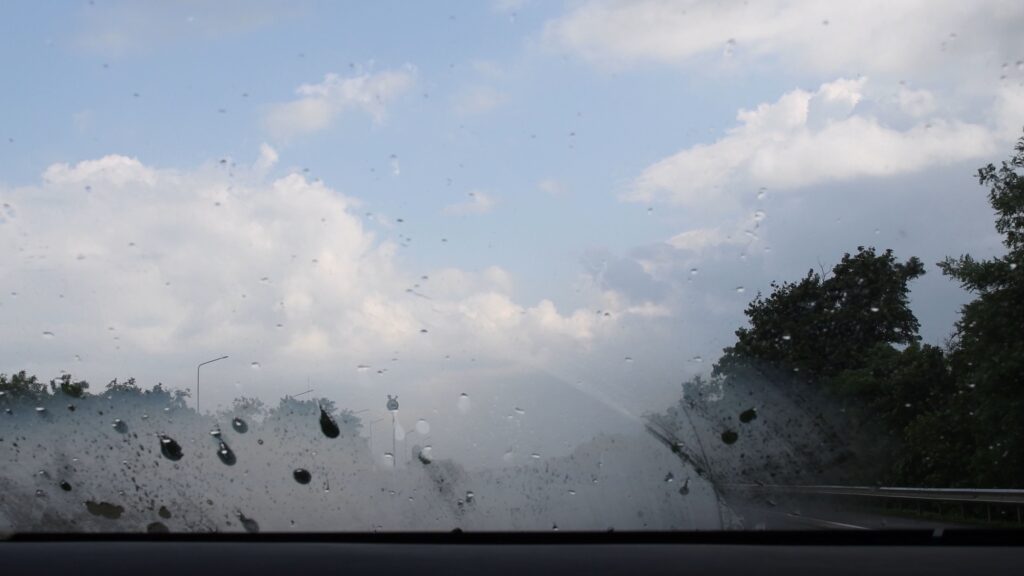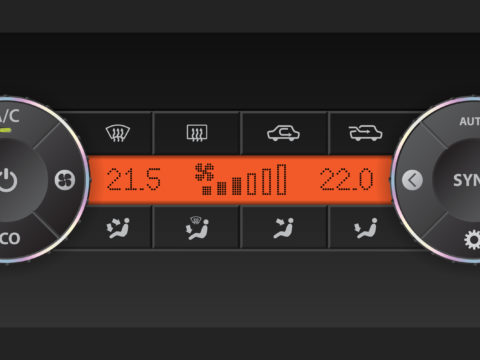Many are often perplexed when their windshield fogs up in the summer. Believe it or not, windshield fog is not just a winter phenomenon. Luckily there are ways around this headache and potential hazard.
First, you need to know why this happens before fixing it. So let’s look at why your windshield fogs up in summer and the various ways you can remove it.

Contents
Is Condensation on Car Windows Bad?
Although condensation may seem harmless on the surface, it is very harmful and can cause various types of damage over time.
This damage can come in the form of mold, rotting window frames, or damage to the finish or the walls of the vehicle.
Why Do Windows Fog Up in the Summer?
When your windows fog in the summer, it’s mainly due to warm heat from the air hitting the windshield while it’s cool.
However, there are several reasons why windows fog up but these reasons don’t only occur in the summertime.
1. Surface Tension
The process of surface tension plays a huge role in fogged windows. Surface tension is created when liquid attracts more liquid on a surface.
So, when water droplets are on the surface of a windshield, they will only attract more droplets. This moisture leads to the development of fog.
2. Humidity
Humidity, especially in the summer, can easily cause fog on your windshield. This is because moisture turns into water vapor which turns into fog.
3. Condensation
Condensation occurs opposite of how humidity develops. When the windshield is cold, and the air is warm and filled with moisture, condensation will occur.
If it’s humid, condensation will follow suit. This happens because the more humidity in the atmosphere and the colder it is, the more water will need to escape.
4. Heat
Hot and warm air holds more moisture than cool air. This is because water typically leaves its liquid state and becomes gaseous in heat.
This occurs because the molecules aren’t containing water molecules. This leads to the creation of fog.

How To Keep Your Windshield From Fogging Up in the Summer
The quickest way to defog your windows is by using an anti-fog spray. This method is effective and typically works for an extended duration of time.
Anti-fog spray typically lasts up to 30 days but sometimes longer. Another great way to keep your windshields from fogging in the summer is by using windshield wipers.
Lastly, warm up the inside of your car, as backward as that may sound. After using windshield wipers you want to balance out the temperature in the car by turning down the air conditioning.
As it warms up you then want to turn off your recirculation feature. Turning this off will help to balance the temperature inside the car to the temperature outside.
This process of equalization will help remove the fog.
1. Quick Sheen Anti-Fog Cleaner
The Quick Sheen anti-fog cleaner is the perfect combination of a cleaner and an anti-fog spray. It helps remove dirt, debris, and even bugs and works on various surfaces.
This anti-fog cleaner is also helpful for preventing scratches and other damage when removing fog or debris. It’s also safe and doesn’t contain any harsh chemicals.
2. Shine Armor Anti-fog Hero with Microfiber Cloth
This microfiber cloth and spray combo by Shine Armor easily gets rid of fog. In addition, it helps to control and reduce weather condensation on surfaces.
This product is great because it doesn’t contain harsh chemicals or solvents preventing allergic reactions.
It also combats dust and static while adding clarity and visibility to your windshield. It’s effective even in extreme weather and lasts up to 3 months.
3. Review Spray
Review Spray is effective on the windshield and even side mirrors. It lasts up to 30 days and is safe to use on a variety of surfaces.
It’s also made with hydrophilic technology, adding an extra protection layer. It also helps the spray to last long.
How To Remove Fog From Outside Windshield
The fog that has built up on the outside windshield can be a nuisance. Luckily, there are a few ways you can remove it quickly and even clean your windshield in the process.
1. Turn Off the A/C
Briefly turning off the air conditioner can help clear the fog. After turning it off, slightly let down your window so the fog can escape. Afterward, you can turn it back on.
Turning on the defrost can also help the fog escape. Furthermore, turning on the heat and defrost can quickly bring the temperature inside the car to the equivalent of the temperature outside.
When the temperature is increased, it will encourage the fog to clear up.
2. Clean Your Windshield
When a windshield is dirty, it increases the chances of fogging. In addition, dirt and debris particles encourage the creation of condensation.
Condensation then develops into fog which happens more frequently on dirty windows than on clean windows. So keeping your windshield clean regularly is a guaranteed way to prevent fog.
3. Use Windshield Wipers
Windshield wipers are an effortless way to get rid of fog. They help to easily remove the dirt on your windshield and help get rid of any moisture barrier on the window.
They also help to rebalance temperatures and keep the windshield free of debris.
Will an Anti-fog Windshield Help?
Although it would be best helpful to have, finding the glass for already anti-fog vehicles is not easy. However, there are other routes you can take to ensure your windshield remains protected from the fog.
1. Anti-fog Sprays and Products
As previously mentioned, countless sprays and products help to reduce fog in your car windshield and windows.
These products are the most effective ways to keep fog away. They help to remove dirt and moisture, which encourages fog build-up.
Anti-fog sprays also assist with creating a protective barrier from fog-inducing temperatures, debris, and the environment.
2. Natural Anti-fog Remedies
Surprisingly, natural remedies can help remove and keep fog at bay. These products usually lie around your home, making it easier and faster to get rid of fog.
These remedies include sudsy ammonia, vinegar, dishwasher detergent, and rubbing alcohol. Some of these are combined to create a solution that removes fog from any glass surface.














